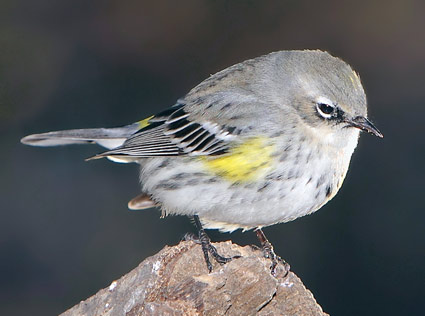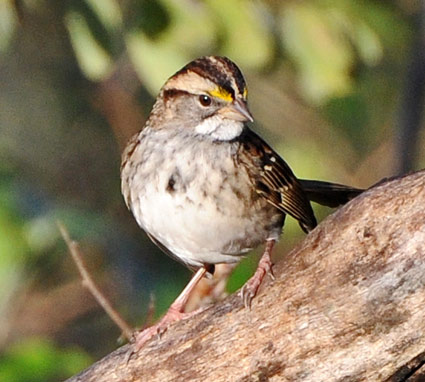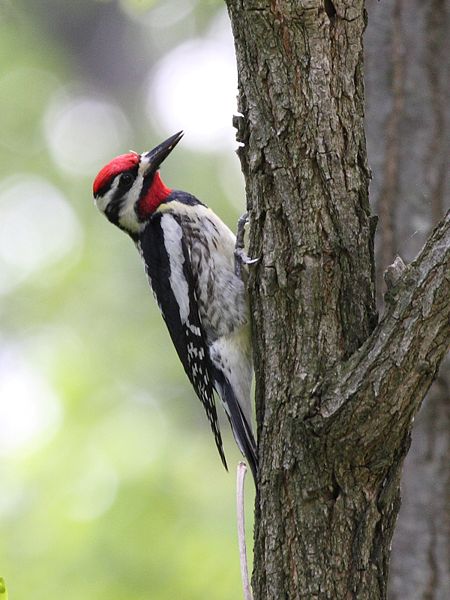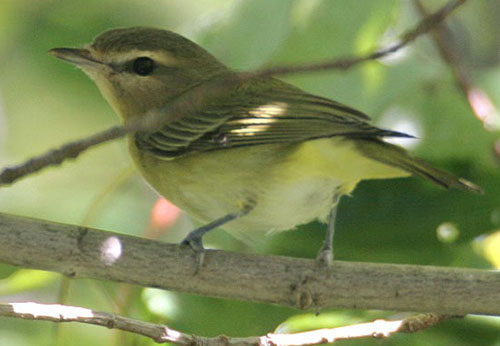It looks like you're using an Ad Blocker.
Please white-list or disable AboveTopSecret.com in your ad-blocking tool.
Thank you.
Some features of ATS will be disabled while you continue to use an ad-blocker.
8
share:
Unusually warm weather preventing birds from flying south
If the unusually warm weather has left outdoor skiiers and ice skaters out of luck, it has been a boon for bird watchers. According to Birdlife Finland many bird species have postponed their flight south until colder weather arrives. A total of 160 bird species have been observed in Finland, and a couple of them have never even been seen in the country before. The rarest bird species observed in December - the Isabelline Shrike and Hume's Warbler - have not previously been observed during winter months in Finland. The land of a thousand - presently ice-free - lakes is still teeming with waterfowl. Hundreds of Canadian Geese and swans have delayed their migration south. Additionally there are more White Wagtail, Meadow Pipit and Hen Harriers than usual according to Birdlife. However, there are fewer Fieldfares, Waxwings and Pine Grosbeaks than usual because they have difficulty finding food.
Link
Very crazy winter for us, but also for birds. They already should be in South, but now warm weather confuses them. They can die in hunger because its not warm enough for insects. This could really harm our bird populations.
edit on Fri Dec 23 2011 by DontTreadOnMe because:
IMPORTANT: Using Content From Other Websites on ATS
I hear that. I live in Michigan and a lot of the birds are still around which my family and I thought was very odd. Thanks for the info
We have yet to see any sign of winter this year. The highs are still 72 – 80° (22 – 27°C) and 52 – 60° (11 – 16°C) at night. Compared to
this time last year when our lows at night were dropping to 17° (-8°C), it is insane. My favorite time of the year is winter, especially because
summer lasts 5 – 6 months here (depending on your definition of summer), and it is great to have a break from the Subtropical sun baking your skin
and the hot humid air.
Bring on the winter already!
Bring on the winter already!
reply to post by Thebel
Yep.....and somehow it seems like its gonna get warmer(+7 next monday herein Tampere)....instead of colder ....real crazy weather here in Finland.......I remember that around this time of the year, last year temperatures were something like -25 to -30 celsius.....really makes me wonder...
Yep.....and somehow it seems like its gonna get warmer(+7 next monday herein Tampere)....instead of colder ....real crazy weather here in Finland.......I remember that around this time of the year, last year temperatures were something like -25 to -30 celsius.....really makes me wonder...
Originally posted by Thebel
the Isabelline Shrike and Hume's Warbler - White Wagtail, Meadow Pipit and Hen Harriers , Fieldfares, Waxwings and Pine Grosbeaks
Sounds like Joe Dirt's firecracker list...
(can't embed)
Anyway, I live in South Ga (US) and I can't say I've heard the geese fly over more than twice..
(of course, I've been locked inside playing Battlefield 3)
edit on 23-12-2011 by rbnhd76 because: add a YT vid
reply to post by ringht_n_wrong
Here in the Netherlands,
they promised us a real Horror-winter,
they promised us temperatures of -25c and beyond,
they promised us ice-skating in november,
they promised us lots of snow,
they promised us lots of chaos and disorder...
But what do we get?
Rain and temperatures above 8c...
Oooh and I wanted to have so much fun with the snow and the chaos here!
Here in the Netherlands,
they promised us a real Horror-winter,
they promised us temperatures of -25c and beyond,
they promised us ice-skating in november,
they promised us lots of snow,
they promised us lots of chaos and disorder...
But what do we get?
Rain and temperatures above 8c...
Oooh and I wanted to have so much fun with the snow and the chaos here!
I would not worry too much about our fine feathered friends...they know where their bread is buttered and seek to conserve energy if possible...
Plus, if they can continue to breed wherever they are at to propagate, they will...
The primary motivation for migration appears to be food; for example, some hummingbirds choose not to migrate if fed through the winter. Also, the longer days of the northern summer provide extended time for breeding birds to feed their young. This helps diurnal birds to produce larger clutches than related non-migratory species that remain in the tropics. As the days shorten in autumn, the birds return to warmer regions where the available food supply varies little with the season.
Plus, if they can continue to breed wherever they are at to propagate, they will...
it was 60degress on the solsistice up here in Providence RI. warm solsistecs are a bad omen.
reply to post by Thebel
The weather has been unusually warm here in North Carolina. Yesterday was an almost record high. From my observations as a bird watcher, though, all the proper birds are here for the winter and the neo-tropical migrants passing through from Canada to Latin America and South America came through just about on time, the height of the migration was perhaps a week later than usual.
Some of the more interesting birds we have here in my backyard during the winter are the Yellow-Rumped Warbler, White-Throated Sparrow and the Yellow-Bellied Sapsucker.
Yellow-Rumped Warbler

White-Throated Sparrow

Yellow-Bellied Sapsucker

Two of my favorite neo-tropical migrants that I often see are the Philadelphia Vireo and the Black-and-White Warbler.
Philadelphia Vireo

Black-and-White Warbler

In the five years since I have lived in my house, I've recorded 71 different species of birds from my backyard. Where I live is much more diverse for birds than most people realize since many of those species of birds only pass through during a few weeks of the year.
The weather has been unusually warm here in North Carolina. Yesterday was an almost record high. From my observations as a bird watcher, though, all the proper birds are here for the winter and the neo-tropical migrants passing through from Canada to Latin America and South America came through just about on time, the height of the migration was perhaps a week later than usual.
Some of the more interesting birds we have here in my backyard during the winter are the Yellow-Rumped Warbler, White-Throated Sparrow and the Yellow-Bellied Sapsucker.
Yellow-Rumped Warbler

White-Throated Sparrow

Yellow-Bellied Sapsucker

Two of my favorite neo-tropical migrants that I often see are the Philadelphia Vireo and the Black-and-White Warbler.
Philadelphia Vireo

Black-and-White Warbler

In the five years since I have lived in my house, I've recorded 71 different species of birds from my backyard. Where I live is much more diverse for birds than most people realize since many of those species of birds only pass through during a few weeks of the year.
edit on 23-12-2011 by tsawyer2 because: fixed images
reply to post by Mescalito
Exactly the same here in SW England! We were gonna have the winter from hell, etc., but at this rate, we'll be eating Christmas dinner out on the patio. I notice round here too that certain animals have not gone into hibernation, as they normally would have long before now.
Exactly the same here in SW England! We were gonna have the winter from hell, etc., but at this rate, we'll be eating Christmas dinner out on the patio. I notice round here too that certain animals have not gone into hibernation, as they normally would have long before now.
It seems that the current warmer US temps are caused by a positive phase of the Arctic Oscillation. In layman's terms it's a balance of atmospheric
pressures in the Arctic that cause the jet stream to flow flatter west-east, rather than have dips and bends. This locks arctic air much further
north.
en.wikipedia.org...
If you read the wiki article, it also states that Greenland and Newfoundland become colder as a result. Sure enough look at some temps here compared to normal (a sampling showed predicted highs 5 degrees C lower than average for today):
www.wunderground.com...
Just wanted to point this out before people come on here and say global warming is going to kill all the birds
en.wikipedia.org...
If you read the wiki article, it also states that Greenland and Newfoundland become colder as a result. Sure enough look at some temps here compared to normal (a sampling showed predicted highs 5 degrees C lower than average for today):
www.wunderground.com...
Just wanted to point this out before people come on here and say global warming is going to kill all the birds
edit on 12/24/2011 by Fiverz
because: jet stream flows W-E, not E-W
Originally posted by jeichelberg
I would not worry too much about our fine feathered friends...they know where their bread is buttered and seek to conserve energy if possible...
The primary motivation for migration appears to be food; for example, some hummingbirds choose not to migrate if fed through the winter. Also, the longer days of the northern summer provide extended time for breeding birds to feed their young. This helps diurnal birds to produce larger clutches than related non-migratory species that remain in the tropics. As the days shorten in autumn, the birds return to warmer regions where the available food supply varies little with the season.
Plus, if they can continue to breed wherever they are at to propagate, they will...
I have to agree with jeichelberg. Birds are amazingly resilient creatures. Most of the migrants only stop for a few hours a day to feed on their long journeys between their breeding grounds and their winter homes. Some fly non-stop, even through the night.
If you are interested in bird conservation and want to do something easy, fun and very important for Ornithologists around the world, consider making an account at Ebird.org .
There you can submit your observations of birds which you can track, but also is made available to the other bird lovers and scientists as well. All you have to do is follow a simple scientific protocol and submit a checklist.
Here is an example of a query I did on European Greenfinch sightings in Finland for 2011. I used Finland, since that is in the OP post.
Europe an Greenfinch - Finland 2011
You can even view other peoples checklists as well. I would be happy to share mine with you.
edit on 24-12-2011 by tsawyer2 because:
grammar
new topics
-
President BIDEN's FBI Raided Donald Trump's Florida Home for OBAMA-NORTH KOREA Documents.
Political Conspiracies: 4 hours ago -
Maestro Benedetto
Literature: 6 hours ago -
Is AI Better Than the Hollywood Elite?
Movies: 6 hours ago -
Las Vegas UFO Spotting Teen Traumatized by Demon Creature in Backyard
Aliens and UFOs: 9 hours ago -
2024 Pigeon Forge Rod Run - On the Strip (Video made for you)
Automotive Discussion: 10 hours ago -
Gaza Terrorists Attack US Humanitarian Pier During Construction
Middle East Issues: 11 hours ago
top topics
-
President BIDEN's FBI Raided Donald Trump's Florida Home for OBAMA-NORTH KOREA Documents.
Political Conspiracies: 4 hours ago, 26 flags -
Krystalnacht on today's most elite Universities?
Social Issues and Civil Unrest: 16 hours ago, 9 flags -
Supreme Court Oral Arguments 4.25.2024 - Are PRESIDENTS IMMUNE From Later Being Prosecuted.
Above Politics: 15 hours ago, 8 flags -
Weinstein's conviction overturned
Mainstream News: 14 hours ago, 8 flags -
Gaza Terrorists Attack US Humanitarian Pier During Construction
Middle East Issues: 11 hours ago, 8 flags -
Massachusetts Drag Queen Leads Young Kids in Free Palestine Chant
Social Issues and Civil Unrest: 13 hours ago, 7 flags -
Las Vegas UFO Spotting Teen Traumatized by Demon Creature in Backyard
Aliens and UFOs: 9 hours ago, 6 flags -
Meadows, Giuliani Among 11 Indicted in Arizona in Latest 2020 Election Subversion Case
Mainstream News: 12 hours ago, 5 flags -
2024 Pigeon Forge Rod Run - On the Strip (Video made for you)
Automotive Discussion: 10 hours ago, 4 flags -
Is AI Better Than the Hollywood Elite?
Movies: 6 hours ago, 3 flags
active topics
-
President BIDEN's FBI Raided Donald Trump's Florida Home for OBAMA-NORTH KOREA Documents.
Political Conspiracies • 17 • : BingoMcGoof -
Gaza Terrorists Attack US Humanitarian Pier During Construction
Middle East Issues • 29 • : 19Bones79 -
Supreme Court Oral Arguments 4.25.2024 - Are PRESIDENTS IMMUNE From Later Being Prosecuted.
Above Politics • 90 • : Lumenari -
Las Vegas UFO Spotting Teen Traumatized by Demon Creature in Backyard
Aliens and UFOs • 12 • : KrustyKrab -
SHORT STORY WRITERS CONTEST -- April 2024 -- TIME -- TIME2024
Short Stories • 23 • : DontTreadOnMe -
Truth Social goes public, be careful not to lose your money
Mainstream News • 130 • : Astyanax -
Is AI Better Than the Hollywood Elite?
Movies • 13 • : Justoneman -
Hate makes for strange bedfellows
US Political Madness • 47 • : 19Bones79 -
-@TH3WH17ERABB17- -Q- ---TIME TO SHOW THE WORLD--- -Part- --44--
Dissecting Disinformation • 689 • : daskakik -
University of Texas Instantly Shuts Down Anti Israel Protests
Education and Media • 265 • : Astrocometus
8
